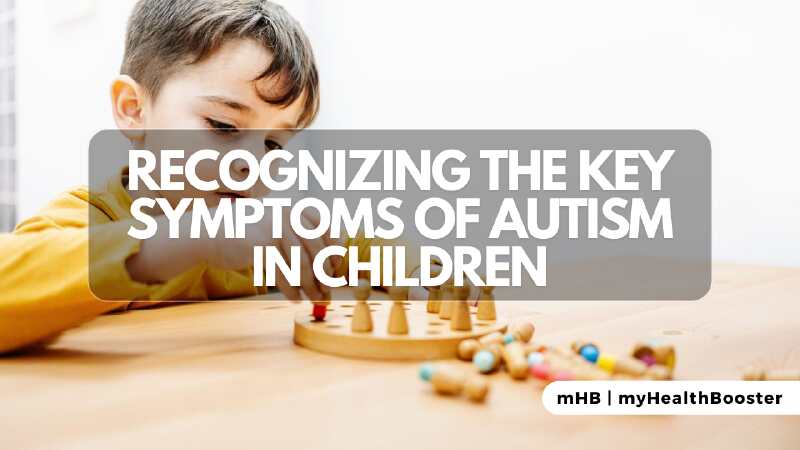Diagnosing autism, or autistic spectrum disorder (ASD), can be challenging due to its varied symptoms. This article aims to shed light on the three primary indicators of autism in children, emphasizing the importance of early detection and intervention.
Symptoms of Autism to Watch for
- Delayed Milestones:
- Children typically achieve developmental milestones at their own pace, but certain delays may signal autism.
- Warning signs include a lack of smiling by 6 months, absence of facial expressions by 9 months, and no cooing or babbling by 12 months.
- Limited or no pointing or waving by 12 months and absence of speech by 16 months are red flags.
- Social Awkwardness:
- Observing a child’s social behavior is crucial.
- Indicators encompass avoiding eye contact, preferring solitary play, unresponsiveness to their name, discomfort with touch, a preference for fixed routines, and difficulty understanding or expressing emotions.
- Communication Challenges:
- Verbal and nonverbal communication issues are common in children with autism.
- Repetitive word use (echolalia), a flat tone of speech, an inability to comprehend emotions in conversation, and difficulty expressing needs are signs.
- Additional concerns include regression of milestones, repetitive behaviors (stimming), abnormal eating habits, and temper tantrums.
Understanding Autism
- ASD affects social interaction due to differences in processing sensory stimuli in the brain.
- It is vital to note that autism is not contagious, and there is no link between autism and vaccination.
- Individuals with autism may experience other challenges like mental retardation, seizures, or hyperactivity.
- Early detection and intervention are pivotal for improved communication and behavioral management.
Seeking Guidance for Delayed Milestones
- Parents should promptly address concerns about delayed milestones with their child specialist.
- Risk factors, such as parental age, medication history during pregnancy, and family history of autism, warrant closer monitoring.
- The “wait and watch policy” is ineffective; early intervention, especially between 1-2 years, can significantly address autism symptoms.
High-Functioning Autism
- High-functioning autism is not a distinct diagnosis but refers to individuals within the autism spectrum who possess certain independent living skills.
- Asperger syndrome and high-functioning autism fall under the autism spectrum disorder umbrella.
Identifying Signs of High-Functioning Autism
- Challenges in social interaction and communication persist despite basic life skills.
- Difficulties in participating in conversations, understanding emotions, reading body language, and maintaining friendships are common.
- Emotional and behavioral challenges include difficulty regulating emotions, adherence to rigid routines, repetitive behaviors, and sensitivity to sensory stimuli.
Summary
Parents should remain vigilant for signs of delayed milestones, social awkwardness, and communication challenges. Seeking professional guidance and understanding the spectrum’s diverse manifestations can empower families to navigate the complexities of autism with patience and support.
